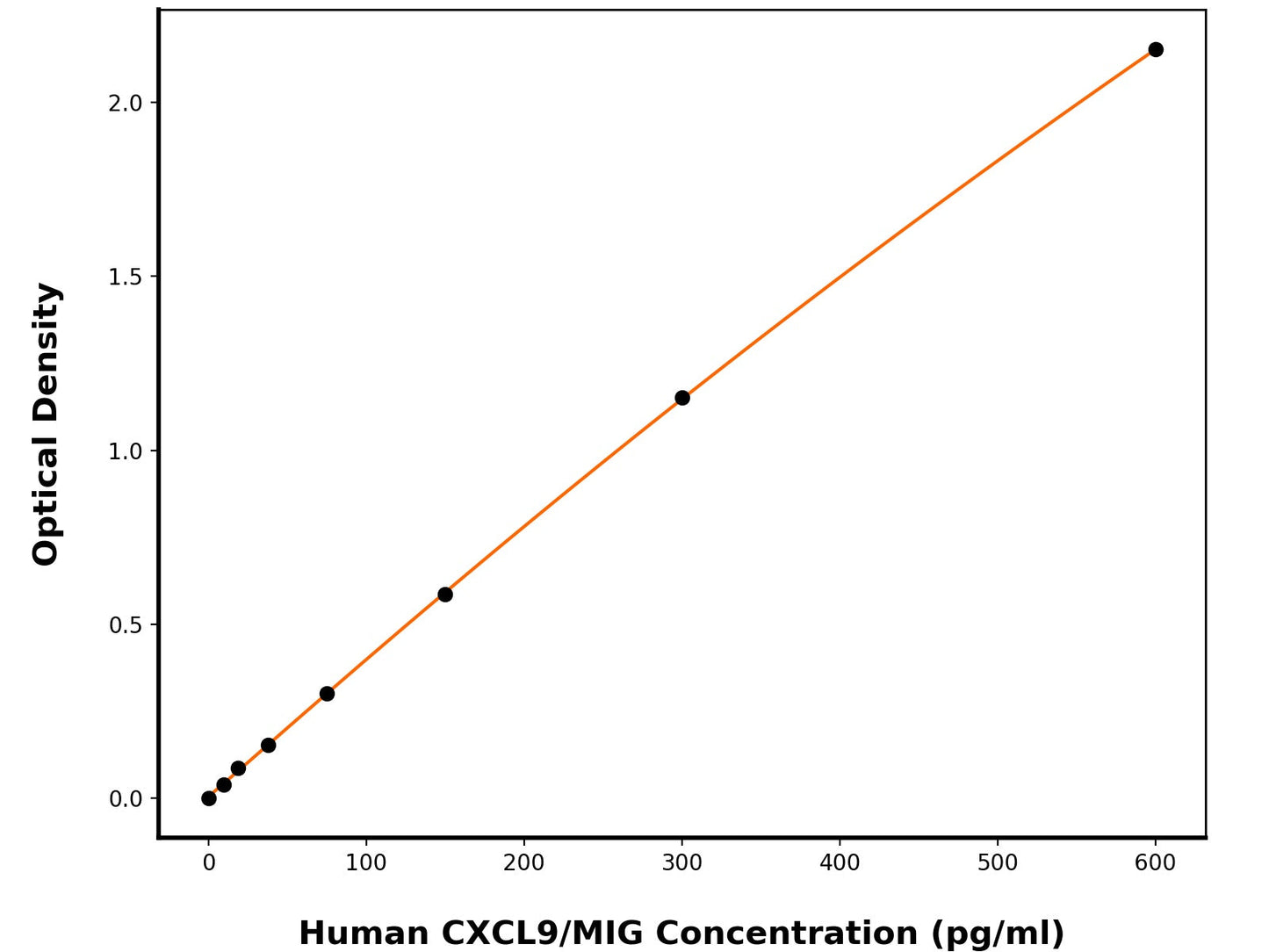1
/
of
1
Human C-X-C Motif Chemokine 9 (CXCL9) ELISA Kit
Human C-X-C Motif Chemokine 9 (CXCL9) ELISA Kit
This ELISA kit is designed to detect Human C-X-C Motif Chemokine 9 (Human CXCL9). The assay plate has been pre-coated with mouse anti-Human CXCL9 monoclonal antibody. When the sample containing CXCL9 is added to the plate, it binds to the antibodies coated on the wells. Then, a horseradish peroxidase conjugated mouse anti-Human CXCL9 Antibody is added to the wells and binds to CXCL9 in the sample. After washing the wells, substrate solutions are added, and the color intensity is directly proportional to the amount of Human CXCL9 present. The reaction is stopped by adding an acidic stop solution, and the absorbance is measured at 450 nm.
Catalog No:
BPE149
Regular price
$624.00 USD
Regular price
$480.00 USD
Sale price
$624.00 USD
Unit price
/
per
2 weeks
Couldn't load pickup availability
Product Details
Species Reactivity
Human
Sensitivity
2.87 pg/mL
Detection Range
9.38-600 pg/mL
Sample Type
Serum, plasma, cell culture supernates
Incubation(s)
3.5 hour(s)
Research Areas
Immunology, Neuroscience
Background
Chemokine (C-X-C motif) ligand 9 (CXCL9), also known as Monokine induced by gamma interferon (MIG), is a small cytokine belonging to the CXC chemokine family. The function of this chemokine has not been specifically defined; however, it is thought to be involved in T cell trafficking. CXCL9/MIG functions as one of the three ligands of chemokine receptor CXCR3 which is a G protein-coupled receptor found predominantly on T cells. CXCL9/MIG, together with CXCL10 and CXCL11, may activate CXCR3 by binding to it. CXCL9 serves as a cytokine that affects the growth, movement, or activation state of cells that participate in immune and inflammatory response. It has been observed that tumour endothelial cells secrete high levels of CXCL9 in all, and CXCL10 in most melanoma metastases. Experiment data represent novel mechanisms by which tumour cells in melanoma metastases might use the chemokine-expressing endothelium to leave the tumour and eventually to form additional metastases at distinct sites. Experiment results also improved that CXCL9/MIG plays an important role in CD4+ T lymphocyte recruitment and development of CAV, MOMA-2+ macrophages are the predominant recipient-derived source of CXCL9/MIG, and recipient CD4 lymphocytes are necessary for sustained CXCL9/MIG production and CAV development in this model. Neutralization of the chemokine CXCL9/MIG may have therapeutic potential for the treatment of chronic rejection after heart transplantation.
Shipping Condition
Shipped on cold gel packs.
Storage Condition and Shelf Life
This product can be stored at 2-8C.
Analyte
C-X-C motif chemokine 9
Regulatory Status
For Research Use Only

